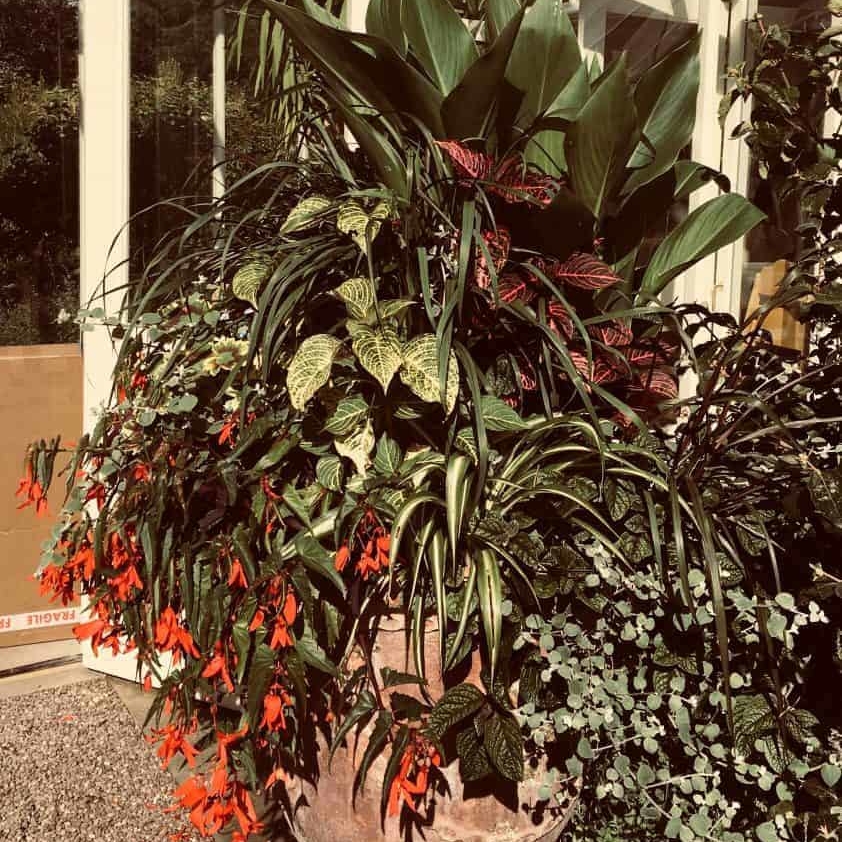Have you now got the garden of your dreams, but something seems lacking in the evening? Perhaps you’re in the process of looking into a new garden design, and are conscious of wanting to use your outside space past dusk?
Outdoor lighting is an element often overlooked when creating the ideal garden. It should be one of the first aspects considered. Furthermore, the range of lighting options available is phenomenal nowadays. Automated systems are a massive part of this.
Why utilise an automatic garden lighting system? Their advantages range from the commonsensical and straightforward to the sublime and life-changing.
Safety and security from automated lighting
First and foremost, use of automated lighting brings serious safety benefits. If you find yourself wandering down to a summerhouse regularly in the dark hours, a motion sensor-powered lit path reduces the likelihood of trips over paving or objects. Similarly, for those with outdoor pools or sunken hot tubs, a timer could illuminate these to save people accidentally falling in. Can you think of anything more irritating than returning home from work or an evening with friends, just to fumble on the doorstep, probing for the keyhole and hoping you have the right key? Well imagine porch and entrance hall lights that switch on upon your approach!
In the same vein, we have security measures utilising automated lights. As this article from Loxone comments, ‘you can use your lights as a ‘presence simulator’’. Set up timers to replicate your usual daily activities and strangers won’t be sure whether you’re at home or away. Taking it one step further, the article suggests adding in an automatic sprinkler system or even a speaker, to really give potential criminals a fright!
Highlighting the finer points
It’s not just about widening the eyes of burglars, though. The perfectly designed garden will have one or more stunning focal points – trees, flower beds, artwork. A swimming pool or fountain. An outdoor kitchen. You’ll want your guests and loved ones to look out at night and say “wow”. After all, there’s no use going to the effort and expense of having these features created, only to see them half the day (or less).
This is where skilfully positioned, automated lighting comes into its own even more. Uplighting trees brings them to life in a different way. The art of “scene setting” is a delicate one, but excellent designers can achieve this. It involves recalling specific settings for distinct purposes. Indoors, this can mean one light setting for preparing a meal and another for watching TV (this Rako article explains it wonderfully). Outdoors, it means you can gently light your carefully planted borders can from dusk until dawn, but can be more dramatic during a summer barbecue.
Dimmer lights are available, reducing energy costs and extending lamp life expectancy. Motion sensors can override these when anyone heads outside, rendering the finer details more visible.
Extending use of your garden
Ultimately, automated garden lighting makes your outdoor space that much more accessible. Why hide inside on balmy summer nights when you could be outdoors enjoying wine and nibbles with friends and family? We’re using our gardens more and more for socialising and relaxing now, rather than just growing flowers and fruit. Effective, effortless lighting becomes so much more vital in this respect. In addition, it’s possible to link automated lighting to automated music. Turn on the outdoor kitchen lighting, turn on your favourite playlist!
A variety of options
Even the quickest bit of research into outdoor lighting reveals just how many options are available. For example, you can use white lights, warmer bulbs or even coloured LED. The different forms that lamps can take is mouthwatering. Equally, indoor smart switches come in a range of designs. What’s more, the “smart part” of these can be transferred to other casings. When you restyle your interior, altering your switches, your smart switches can keep up rather than looking out of place.
The number of lights you have as automated versus manual can vary too. At least one UK company – Light Symphony – offers the choice of “zoning” your lighting. You can group lamps into a maximum of 29 zones, so each zone acts in the same way.
As for controlling your garden lighting, it can connect to a range of triggers:
- Light sensors: as daylight fades
- Motion sensors: as vehicles or people pass by, or doors and gates open
- Key fobs: small, but may only work with their own particular system and walls can pose a transmission issue
- In-vehicle remote controls: more generic, but bulkier and still have issues with passing physical barriers at times
- Mobile phones: apps allow your mobile to act as a fob, even controlling tones if you’ve fitted colour lamps
Two of the best companies to check out for more insight into automated home and garden lighting are Rako and Philips, whose Hue lighting can be integrated into certain other systems.
As shown in this DIY post on Home Toys and this Light Symphony brochure, the complexity of the system is up to you. Illuminate just your driveway on arrival, or make the most of your whole garden day and night in a host of ways. The choice is yours.
Kevin Gelder
Kevin joined Bestall & Co in late 2017 and brought a range of skills with him from a varied background. He gained a degree in French and Italian from Lancaster University in 2009 before successfully completing a PGCE at the University of Sheffield in 2011. He built on his communication skills through secondary language teaching, before working in healthcare administration.
Ultimately though it was his passion for plants and gardening which brought him to Bestall & Co as a member of the planting team, and although he's now moved back to an office based role, the articles he wrote whilst he was still with us live on.



